RACM Approves Tax Funding for Streetcar
The TIF funding approved will also pay for infrastructure for The Couture high-rise, whose architect promised it will "push the boundaries of urban design."
With one member abstaining, the Redevelopment Authority of the City of Milwaukee approved plans for the Tax Incremental District financing portion of the Milwaukee Streetcar at a special meeting held Tuesday, December 2nd.
Department of City Development Commissioner Rocky Marcoux gave the presentation to the commissioners, using 96 slides to illustrate his talk in favor of the funding for the streetcar, as well as for public infrastructure improvements for the proposed Couture and Domus developments.
Marcoux led his comments with the city’s argument that the Couture lies within the riparian rights the city bought from the Chicago and Northwestern Railroad in 1913. He contends this agreement, which uses Lincoln Memorial Drive as the delineation between developable and non-developable properties on the filled lakebed, will prevail in future discussions.
He dismissed arguments that the Couture is proposed for filled lakebed, a point of contention that may yet need to be resolved.
Marcoux said the TID financing, including the streetcar portion, is vital for the redevelopment of the lakefront.
Pointing to the “flyover ramps” of the nearby freeway, Marcoux said, “this is the front door to the city of Milwaukee. It looks like the loading dock.”
Focusing on the county-owned Transit Center, which would be demolished and replaced by the Couture, Marcoux called the building, “long obsolete,” and “ill-conceived” and “obsolete and blighted,” adding that it was “built with absolutely no accessibility.” Other than that he likes it.
The Couture, with its multi-modal concourse incorporating rail, pedestrian, bus, bicycle (and automobile) access, will provide access to the lakefront, and the surrounding areas. Once constructed, he said, it would be a “transit connection point,” a “fulcrum building,” with 37,000 square feet of public green space above. The transit and green space components merit the city’s $17.5 million investment of TID proceeds in the Couture project, he said.
The Couture is a “drop-dead beautiful building on what is one of the most blighted sites downtown.”
Marcoux said the TID would also benefit the 833 building now under construction to the west of the proposed Couture, which he says should open in late 2015 or early 2016. He also said the TID would benefit a proposed site for a major corporate headquarters that could be constructed at the end of E. Clybourn St., where an existing freeway ramp is in the process of being relocated, providing a site that would be “marketable across the world.”
He also said the Lakefront Gateway Plaza, which would tie all of these developments together, received 24 design submissions, an “astounding” response. Speaking of the designers who hope to submit plans, he said, “they see what we see … something great.”
“This is our Millennium Park,” he said of the site south and west of Discovery World, lying between E. Michigan and E. Clybourn streets east of N. Lincoln Memorial Drive.
Rick Barrett, the developer of the Couture, said his Moderne project, the first modern high-rise west of the Milwaukee River downtown, is now 97 percent full, leading him to be optimistic about the opportunities for the Couture. “The lakefront has great bones,” he said, using a developer’s term for “location, location, location.”
Barrett also introduced Couture architect Matt Rinka, who said the most noticeable feature of the Couture will be its tower, consisting of a “series of concentric ellipses,” that will provide something new for the Milwaukee skyline, by “pushing boundaries of where urban design has been in Milwaukee.”
“I’m proud of the tower, but I am much prouder and more excited about the ground level” amenities, he said. A key part of that is the public space funded by the TID.
His design will “get people out of their automobiles and onto the lakefront as quickly as possible,” Rinka said. The concourse will “scoop people up,” not just to the lakefront but “for shopping, dining and living on-site.”
“It is surrounded by retail, but the center is the pedestrian walkway,” he said.
The project should “get Millennials excited,” along with “people looking to live in an urban environment. … This is what they’ve been looking for.”
The concourse is unique, he said, and may have only been possible at this site. “I challenge people to find something like this in any city,” he said, adding that he predicts the design will be studied by others.
Echoing the theme of Marcoux, Rinka said, “this is the front door to the city.”
Marcoux expanded his comments on the streetcar, emphasizing that the planned first stage of the project “can’t be a stand-alone system.” Instead, he labels it as the “Base System,” adding that “a successful starter system is the foundation for future route extensions” to the northwest side, south side, airport, Marquette University and the UW – Milwaukee.
Marcoux countered the argument that Milwaukee lacks population density. In fact, it is the 14th most densely populated city in the country, with 6,239 people per square mile. Of the top 40 densest-populated cities, only three don’t have plans for a streetcar right now. All cities with more density have systems in place, with Milwaukee’s categorized as “under planning.” These other cities with streetcar systems compete with Milwaukee, he said — “including for public money.”
Marcoux said that after negotiations with the utilities and other stakeholders, the city will have to pay $22.7 million for utility relocation in connection with the construction of the streetcar. This is below the original $50-$75 million estimate.
Once construction is underway, the streetcar “debate will change from ‘how to stop this thing’ to ‘when does it come to my neighborhood?’.”
Marcoux gave a timetable for the streetcar. He said the vehicles will be chosen in 2015. “It doesn’t matter which company we buy them from; all will be sleek and modern.” The final design for the project will be completed in 2015, with construction beginning in 2015 and continuing to 2017, with the line being operational in 2018.
The streetcar budget will include existing federal funding, augmented by $9.7 million funding from the Cathedral Square TID, $31 million from the East Michigan TID #82, and $18.3 million of the extended Erie Jefferson TID #56, along with $10 million in future federal funds being actively sought by Mayor Tom Barrett.
Speaking of the riverwalk system in general, Marcoux said, “this tremendous transformation shows what can be done with judicious use of TIDs. It can bring a tremendous increase in tax base.”
Public comments included those from Patti Keating Kahn who called the streetcar “imperative for the city.” She is the owner of two downtown office buildings, and is the landlord for some 60 small businesses (including Urban Milwaukee). She said all of her tenants are in favor of the streetcar from what she knows. “The streetcar is critical to downtown Milwaukee,” she concluded.
Ken Kraemer of Building Advantage spoke in favor of the 1,160 union construction jobs expected from the Couture. “This is a home run for all of us,” he said.
Teresa Thomas-Boyd, a community organizer liked the plan because it “will help job and economic development.” She liked the “inclusivity” of the project, and the mandated 25 percent small business and 40 percent Residential Preference Program participation in the Couture term sheet, which also calls for a permanent easement for public access to the site amenities. “Let’s make ourselves a bit happier” with the good news of the development, she said.
Randy Crump said he has traveled to streetcar cities on vacation, and went to a streetcar convention in Utah, “on my own dime.”
There is a tremendous opportunity and need here, he said. “There is a hunger here for this in Milwaukee.”
Streetcar Renderings
Urban Milwaukee Streetcar Coverage
- How to Sell the Streetcar – Michael Horne – November 28th, 2014
- Next Stops for the Streetcar – Michael Horne – November 24th, 2014
- Barrett Moving Forward with Streetcar – Jeramey Jannene – November 18th, 2014
- Who Will Be Streetcar Operator – Michael Horne – May 8th, 2014
- A Streetcar Named Cooperation? – Dave Reid – April 27th, 2014
- How a Streetcar Spurs Development – Angie Schmitt – November 3rd, 2013
- Streetcar Social – Michael Horne – September 12th, 2013
- Mayor Says Streetcar is a “Trojan Horse” – Michael Horne – April 17th, 2013
- Whoops, We Changed Our Mind – Dave Reid – September 27th, 2012
- Battle of the Bobs: Donovan vs Bauman Streetcar Press Conference – Jeramey Jannene – May 18th, 2012
- Important Hoan Bridge and Milwaukee Streetcar Meetings This Week – Dave Reid – November 14th, 2011
- Milwaukee Streetcar Passes Common Council – Jeramey Jannene – July 26th, 2011
- Keep the Milwaukee Streetcar Moving Forward – Jeramey Jannene – July 8th, 2011
- Milwaukee Streetcar at Apex – Jeramey Jannene – June 16th, 2011
- Milwaukee Streetcar Takes Key Step Forward – Jeramey Jannene – May 6th, 2010
- Milwaukee Streetcar Meeting This Thursday – Jeramey Jannene – October 5th, 2009
- Milwaukee Streetcar Routes Unveiled by Mayor Barrett – Jeramey Jannene – September 21st, 2009
- Milwaukee Streetcar Round-Up – Jeramey Jannene – April 19th, 2009
- Vote for your Favorite Milwaukee Streetcar Route – Jeramey Jannene – March 25th, 2009
- Design Your Own Streetcar Route – Jeramey Jannene – March 23rd, 2009
- Streetcars Coming to Milwaukee – Dave Reid – March 14th, 2009
Correction: The original story said the chairman Bill Schwartz was not present. The story has been updated as he was in attendance.
More about the Milwaukee Streetcar
For more project details, including the project timeline, financing, route and possible extensions, see our extensive past coverage.
- Another Streetcar Collision - Jeramey Jannene - Jun 27th, 2025
- Streetcar Hit By Apparent Red Light Runner - Jeramey Jannene - Jun 16th, 2025
- Streetcar Will Run On Consolidated Route During Summerfest - Jeramey Jannene - Jun 11th, 2025
- City Hall: Milwaukee Must Replace Failing Streetcar Switches - Jeramey Jannene - Feb 24th, 2025
- Streetcar Confronts Limited Funding, Operations Challenges - Evan Casey - Jan 22nd, 2025
- Council Kills Streetcar’s ‘Festivals Line’ - Jeramey Jannene - Jul 31st, 2024
- Streetcar Will Use Festivals-Oriented Route Through Summer - Jeramey Jannene - Jul 9th, 2024
- The Hop’s Lines Will Merge For Easier Summerfest Service - Jeramey Jannene - May 30th, 2024
- Streetcar Begins Daily Service To The Couture, BRT Will Soon Follow - Jeramey Jannene - Apr 11th, 2024
- Milwaukee’s Three Streetcar Extensions Need Mayoral Direction - Jeramey Jannene - Nov 8th, 2023
Read more about Milwaukee Streetcar here
Political Contributions Tracker
Displaying political contributions between people mentioned in this story. Learn more.
- December 23, 2020 - Tom Barrett received $500 from Rocky Marcoux
- December 27, 2018 - Tom Barrett received $1,000 from Rick Barrett
- December 22, 2018 - Tom Barrett received $500 from Rocky Marcoux
- December 4, 2018 - Tom Barrett received $400 from Randy Crump
- December 29, 2017 - Tom Barrett received $500 from Rocky Marcoux
- December 27, 2017 - Tom Barrett received $400 from Patti Keating Kahn
- December 21, 2017 - Tom Barrett received $400 from Randy Crump
- December 13, 2017 - Tom Barrett received $1,500 from Rick Barrett
- May 22, 2017 - Tom Barrett received $400 from Patti Keating Kahn
- March 1, 2017 - Tom Barrett received $400 from Rocky Marcoux
- February 21, 2017 - Tom Barrett received $400 from Randy Crump
- February 2, 2016 - Tom Barrett received $400 from Randy Crump
- January 27, 2016 - Tom Barrett received $400 from Patti Keating Kahn
- December 31, 2015 - Tom Barrett received $50 from Randy Crump
- November 19, 2015 - Tom Barrett received $400 from Patti Keating Kahn
- November 2, 2015 - Tom Barrett received $2,600 from Rick Barrett
- September 18, 2015 - Tom Barrett received $100 from Randy Crump
Plenty of Horne
-
Villa Terrace Will Host 100 Events For 100th Anniversary, Charts Vision For Future
 Apr 6th, 2024 by Michael Horne
Apr 6th, 2024 by Michael Horne
-
Notables Attend City Birthday Party
 Jan 27th, 2024 by Michael Horne
Jan 27th, 2024 by Michael Horne
-
Will There Be a City Attorney Race?
 Nov 21st, 2023 by Michael Horne
Nov 21st, 2023 by Michael Horne


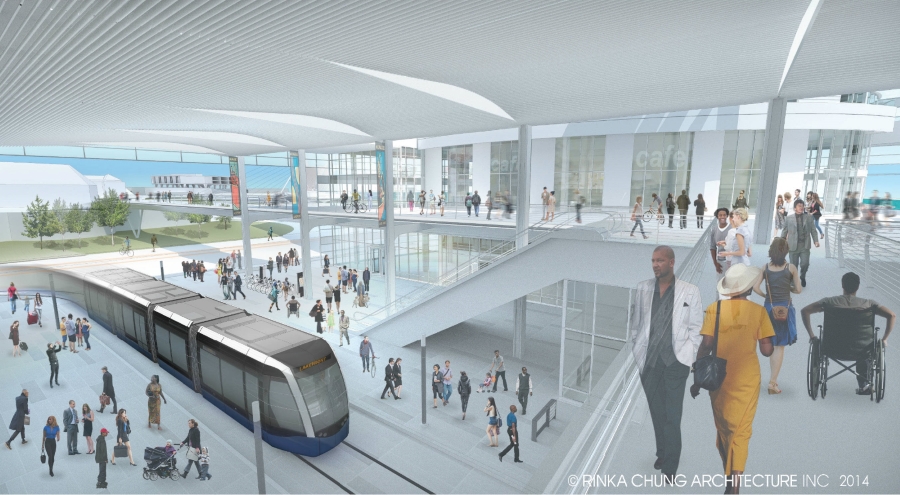
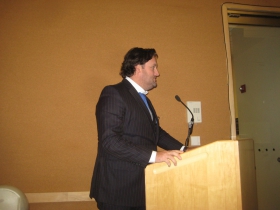
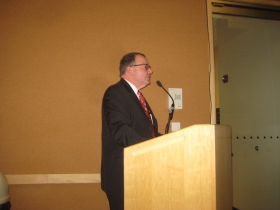
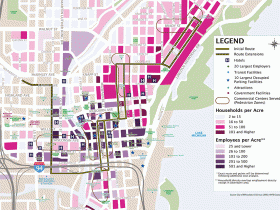
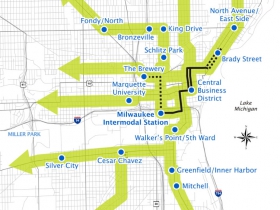
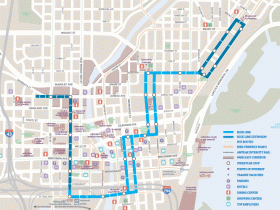
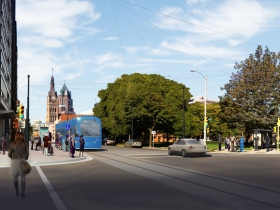
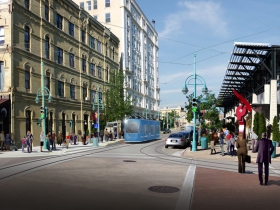
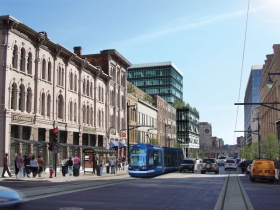




















I attempted to attend this meeting to voice my opposition and arrived at 7 oclock at the wisconsin center and every door was locked and there was noone tobe seen. The website said from 530 to 8 oclock. Nice to see there was lots of discussion for a multiple million dollar debacle. Its as good an investment as the city got when they funded the grand avenue mall . Several times.
@Aj I assume you are referring to a different meeting, as today’s meeting was at 2:30.
Al:
That is most unfortunate. I’m sure that your comments about a “choo choo” and about “Thomas The Tank Engine” would have been very helpful.
PS: the round metallic device on the door is called a door knob; if you turn it and the push or pull the door then you’re in business!
“The project should get Millennials excited, along with people looking to live in an urban environment. … This is what they’ve been looking for.”
I’m a “Millenial” and I’m not excited. We can’t afford to live there and won’t be shopping there. This is certainly for rich older folks who want to “live in an urban environment”. And by “urban” they mean an ivory tower.
I generally approve of development of any sort in this city, increasing the tax base/increasing density. However, if this particular development can’t float on its own merits let it sink. I’m tired of using public money to help finance the playgrounds of the super rich.
But Millennials repeatedly say that they want to live and play in cities with automobile alternatives and public transit. You don’t think they will use this system? Only the super rich will use it?
I hope all anti streetcar people are as disorganized as Al….. should be smoth sailing. Hey Sam, this may be the first time I’ve heard the term public transportation for the rich used in a setence. Very creative! Wow…. turn off the radio Sam. I remember Mark Belling going crazy over the proposed riverwalk system, the rubber tired trolley system, and on and on. It doesn’t matter what the city tries to do.
Milwaukee is a dense, walkable, beautiful city with great neighborhoods. Fixed rail is made for cities like Milwaukee. We have millions of visitors each year to our city and connecting them to our city and neighborhoods will be a game changer.
I’m not talking about the streetcar guys! I’m talking about the building (ivory tower wasn’t enough of hint?). I live in Milwaukee and love it. I like the streetcar idea, but wish it was used as actual public transit rather than primarily as a development tool (there are city lab articles and studies about this out there).
You guys are so quick to quash the right-wingers out there that you missed my point. This building project is designed for and caters to the super rich and taxpayers shouldn’t pay for it, period.
Also, Couture is a stupid name and can Rinka Chung make a skyscraper that isn’t white please? You have a full spectrum of colors out there guy.
The city isn’t paying for the Couture. They are only funding the public spaces of the building. Yes…. that does inlude the street car connection. Other than the public spaces, the Couture is financed privately – unless I’m missing something.
Actually, I believe I know why the city is expanding the street car line to the Couture in the first phase. Since the Downtown Transit Center was paid for with federal funds for a transit specific purpose, any changes to the building must include a transit component otherwise the county must pay back the feds. Much like the Park East freeway. That would increase the cost of the land far beyond what is considered feasible. So the connection would satisfy the requirement, allowing the county to sell at a reduced price.
I was kidding Sam. Sorry if I came across a bit harsh.
It seems like there’s a lot of trust that all of these things are going to happen. Both the Couture and the streetcar have a lot of opposition, so what happens if one doesn’t happen or one isn’t built until two years later? Will they build a streetcar with no station at the end? Will they build a highrise with an empty train station in it? It seems like the two really depend on each other.